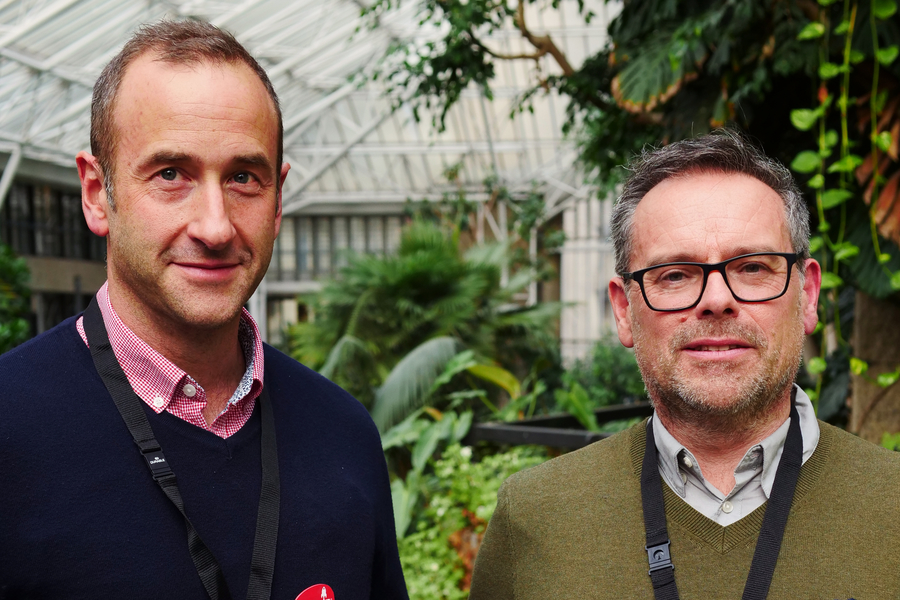The Pitch has seen alumni such as All About the Cooks, Yuup and Small Robot Company triumph in crowdfunding rounds on Crowdcube. So what makes a crowdfunding campaign succeed?
Crowdfunding can be a great way to raise money, but it’s also an amazing opportunity to grow your network, get exposure for your business and strengthen your community.
For startups considering it, here’s our guide to running a successful crowdfunding campaign. You’ll find:
- Expert insight from the Crowdcube team
- Advice from recent Crowdcube success story, All About the Cooks
- Tips on creating a great crowdfunding pitch and video

By loading the video, you agree to YouTube’s privacy policy.
Learn more
Decide whether crowdfunding is right for your business
Before you go all in, you need to decide whether Crowdcube is the right platform for you and your business.
We recently sat down with Shanaya Curtis, Senior Equity Fundraising Manager at Crowdcube. She outlined the three ‘pillars’ that Crowdcube looks for from businesses:
- A strong mission and message, and having the ability to communicate what you do succinctly
- A lead investor or group of investors, who are validating the raise in terms of the valuation and kickstarting the round
- A community of people you think can invest in your company
If you already have these three qualities as a business, then crowdfunding could be a good option.
Find your lead investor
A lead investor helps to validate and raise the profile of your campaign, and make it seem more attractive to other investors. Before going live with a Crowdcube raise, you’ll need to have a lead investor on board.
“There are several ways to find a lead investor. It can be through an angel syndicate, a venture capital fund, or the company can participate in pitching competitions across the country. Businesses can get a lot of introductions through accelerators and incubators as well,” said Aurelien Rinaldi, Senior Equity Fundraising Manager at Crowdcube.
Aurelien also advises securing 50% as a minimum target from your lead investor.

By loading the video, you agree to YouTube’s privacy policy.
Learn more
Build behind-the-scenes momentum
Before going live, there’s a lot of behind-the-scenes work that needs to be done, which can take a fair amount of time.
When The Pitch finalist Rockit raised on Crowdcube, co-founder Matt Dyson remembers spending hours on research. He reached out to founders who had raised before to ask for advice on Rockit’s pitch deck, and looked at current campaigns doing well on Crowdcube.
“It’s important to make sure the preparation is really thorough. We spent weeks looking at other people’s decks, at their pitch pages and requesting more detailed documents. We wanted to make sure we were doing everything to the best of our ability,” Matt said.
Spending time on preparation means you can also build momentum and bring on more investors before your page goes live – both of which will help position your business as a credible opportunity.
All About the Cooks founder and The Pitch semi-finalist Claire Ladkin recently overfunded on Crowdcube. We asked her how long the process took, from deciding to raise on Crowdcube to the page officially going live.
“It took quite a long time; it was probably around three months. Being a smaller team made it that much more challenging to stick to the time scales,” she said.
“The biggest thing I didn’t anticipate was the verification process and the number of statements we would have to prove. I really underestimated the time it would take out of my normal day.”

Five steps for preparing a Crowdcube pitch
For those new to crowdfunding platforms, it can be daunting to create your own pitch and difficult to know what to include.
So, what do you need to prepare?
1. A pitch summary
Your pitch summary is the first thing that most investors will see, so it’s important that it’s done right.
As the name suggests, the pitch summary is where you describe your business – in fewer than 300 words. Remember that you’re promoting your business to investors rather than customers, so focus on key points: the problem you’re solving, traction so far and where it’s going next.
It’s a good idea to look at some other pitch summaries on the Crowdcube website to get some inspiration. Is it clear what the business does? How are they inspiring investors to get involved?
2. Pitch highlights
Pitch highlights give investors a quick overview of your business. The section essentially includes the key points or figures from your pitch summary. Each of the four pitch highlights is limited to just 70 characters, so keep it concise. Use data and stick to the facts – don’t use jargon or superlatives.
Your pitch highlights might include:
- Proof of concept statistics, eg. number of registered users
- Retailers that stock your product
- Size and growth potential of the market
- PR in national newspapers or magazines
3. The Team section
The Team section is where you introduce the key members of your business and what they bring to the company. Highlight relevant qualifications, experience and achievements – this is where you convince investors that you’re the right people to take this business forward.
4. The Idea section
In the Idea section, you should summarise what your business does, the problem it’s trying to solve and the vision for its future.
Include the history of your business, any important milestones and examples of traction. Make sure you don’t use complicated industry terms, so that the opportunity is easy for everyone to understand.
5. A pitch video (optional)
A pitch video is a great way to connect and communicate with potential investors. It’s a chance for investors to see the face behind the business and hear more about your story, which can help to build credibility.
While the video is only optional, the majority of businesses on Crowdcube choose to include one.

By loading the video, you agree to YouTube’s privacy policy.
Learn more
Create a crowdfunding pitch video
A good pitch video should succinctly tell any prospective investors what your business does and why they should invest in the opportunity.
We asked All About the Cooks’ Claire about what she aimed to communicate in her video.
“What we wanted to get across was the scale and the potential. This wasn’t just a ‘fluffy’ thing – behind it there was a big ambitious plan,” she said.
Keep your video short and exciting
A pitch video for Crowdcube should be around three minutes. This may sound easy to do if you’re used to doing 60-second pitches, but it’s still important to get everything across in a clear and concise way.
“People are only really going to engage within the first 30 seconds, so you need to get that hook in there,” said Crowdcube’s Shanaya.
Make people want to invest in your business by communicating your value proposition, getting the brand message across and showing off your product. You could even show some behind-the-scenes footage to create more of a human connection with your startup.
“There’s something about a film that makes a difference; it really helps with getting people to trust you more. It’s a way to get across that you’ve got a really value-driven approach. A video shows that in a way that a deck doesn’t,” Claire added.
“There’s something about a film that makes a difference; it really helps with getting people to trust you more. It’s a way to get across that you’ve got a really value-driven approach. A video shows that in a way that a deck doesn’t.”
All About the Cooks founder and The Pitch semi-finalist Claire Ladkin
Share your journey
Sharing the personal story behind the business is an effective way to win over investors and generate interest in your campaign.
As Crowdcube VP Jonathan Keeling explained when sharing his tips for pitching, people invest in people and humans love a good story.
“Investors have to buy into the proposition emotionally. Otherwise, they will see the investment simply as a number, rather than something that has to be a success for wider reasons beyond financial return.
“A brand’s story is also fundamental for customer acquisition, connection and long-term value. Treat it with respect!” he said.

By loading the video, you agree to YouTube’s privacy policy.
Learn more
Double down on marketing your pitch
Once your pitch is live, it’s not just a case of sitting back and waiting for investors to notice. You need to keep building momentum and excitement around your campaign for its duration.
The more traffic you drive to your pitch, the more exposure you’ll get from Crowdcube’s marketing. If you want to maximise the marketing opportunity there, think of ways you can continue to push people towards your pitch page.
One way to do this is by drip-feeding information and updates throughout your campaign, so you’ve always got something new to talk about. Crowdcube’s Shanaya also suggests focusing on your social media marketing.
“Any marketing that you can add on top will be beneficial, like social media and being active on platforms like Linkedin. Try to create the spirit of missing out,” she said.
In addition to sharing your pitch across your website and email newsletters, prepare other complementary marketing collateral. People will get tired of watching the same video over a four-week campaign, so create a couple of different videos to keep things fresh.
These videos don’t have to be as glossy as your primary pitch video – short investor or customer testimonials recorded on a phone will still have a positive impact.




